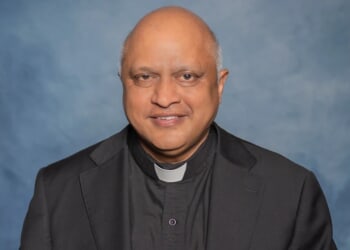In 2023, the Maryland Comprehensive Assessment Program shocked the state with devastating statistics about Baltimore public schools. Thirteen high schools — about 40 percent of the entire district — showed zero students meeting state math proficiency standards. Additionally, only 7 percent of 3rd- through 8th-graders performed at grade level in math.
It is clear that the solution lies not in continuing the same policies that have led us to this point but in embracing new ideas.
These figures paint a clear picture: Baltimore is facing a deep educational emergency that demands immediate attention.
For decades, Baltimore City public schools have seen a steady rise in taxpayer investment. Since the 1970s, funding has increased by an impressive 245 percent. Despite these investments, the outcomes have not improved as expected. Every year, Baltimore public schools spend approximately $21,000 per student, yet the academic performance remains dismal when compared to other states.
In stark contrast, states like Florida and Arizona offer a different approach. They have implemented school choice programs that have led to much better results. In Florida, the Family Empowerment Scholarship program provides low-income families with $7,700 per student to use for private tuition. Arizona follows a similar model with its Education Scholarship Account program, offering approximately $7,000 per student.
These programs not only give families more control over their children’s education but also create a competitive environment where schools must perform to attract students. The success seen in these states points to school choice as a viable solution for underperforming districts like Baltimore. (RELATED: Will School Choice Continue to Spread in 2025?)
Recently, an executive order by President Trump aimed at reforming education has stirred discussions nationwide. While the order is known for its goal to dismantle the bloated bureaucracy of the Department of Education and cut billions in wasted spending, its most important part is found in Section 3.
This section specifically targets the creation and expansion of school choice initiatives. By reallocating funds from inefficient bureaucratic processes to programs that allow families to choose better educational opportunities, this order seeks to address the root causes of poor academic outcomes.
In a city where standard public schools struggle to meet even basic proficiency levels, the reallocation of resources could mean a turning point for Baltimore.
The idea behind school choice is simple: federal funds should follow the student rather than being tied to a particular institution. This change would force school systems to compete for students, which in turn would drive improvements in teaching and learning.
Congress must take this opportunity seriously by passing the Educational Choice for Children Act. Such an act would ensure that every student has the opportunity to attend a school that meets their needs, regardless of their zip code. It would also remove artificial barriers that prevent charter schools from operating freely. By removing these barriers, states can encourage more innovation and higher performance in education, a change that Baltimore desperately needs.
The failure of Baltimore public schools to produce even basic math proficiency among so many students is not just a statistic — it is a personal tragedy for thousands of families. The numbers do not lie: when nearly half of a school district cannot help its students meet state standards, the system itself is clearly broken.
Parents, teachers, and community leaders have witnessed the effects of this failure every day, from crowded classrooms to demoralized staff and anxious students. When resources are funneled into an ever-growing bureaucracy, the most vulnerable children pay the highest price.
Give Baltimore Families a Choice
It is clear that the solution lies not in continuing the same policies that have led us to this point but in embracing new ideas that empower families and educators. School choice is more than just a policy change; it is a rethinking of how we value education and invest in our future.
The promising models seen in Florida and Arizona show that when families are given the power to choose, academic outcomes improve. In a city like Baltimore, where the future of nearly 21,000 students is at stake, adopting a school choice model could mean a brighter, more equitable future.
In the end, education is the engine of progress. We must stop wasting money on bureaucratic systems that do not deliver results and start funding programs that actually work. By following the student, by giving families the power to choose the best educational options available, we can begin to turn around the dire statistics facing Baltimore.
This is not just about reforming one city’s schools — it is about building a fair society in which every child has the chance to succeed. Now is the time to act, and with a renewed focus on school choice, we can finally start to make a difference.
READ MORE from Gregory Lyakhov:





![Trump's Admin Guts Another ‘Rogue Government Agency with Zero Accountability’ [WATCH]](https://www.right2024.com/wp-content/uploads/2025/03/Trumps-Admin-Guts-Another-‘Rogue-Government-Agency-with-Zero-Accountability-350x250.jpg)

![‘We All Owe Him (Elon) a Huge Debt of Gratitude’ [WATCH]](https://www.right2024.com/wp-content/uploads/2025/03/‘We-All-Owe-Him-Elon-a-Huge-Debt-of-Gratitude-350x250.jpg)


![NCAA Champ Salutes President Trump After ‘BIGGEST UPSET IN COLLEGE WRESTLING HISTORY’ [WATCH]](https://www.right2024.com/wp-content/uploads/2025/03/NCAA-Champ-Salutes-President-Trump-After-‘BIGGEST-UPSET-IN-COLLEGE-350x250.jpg)






